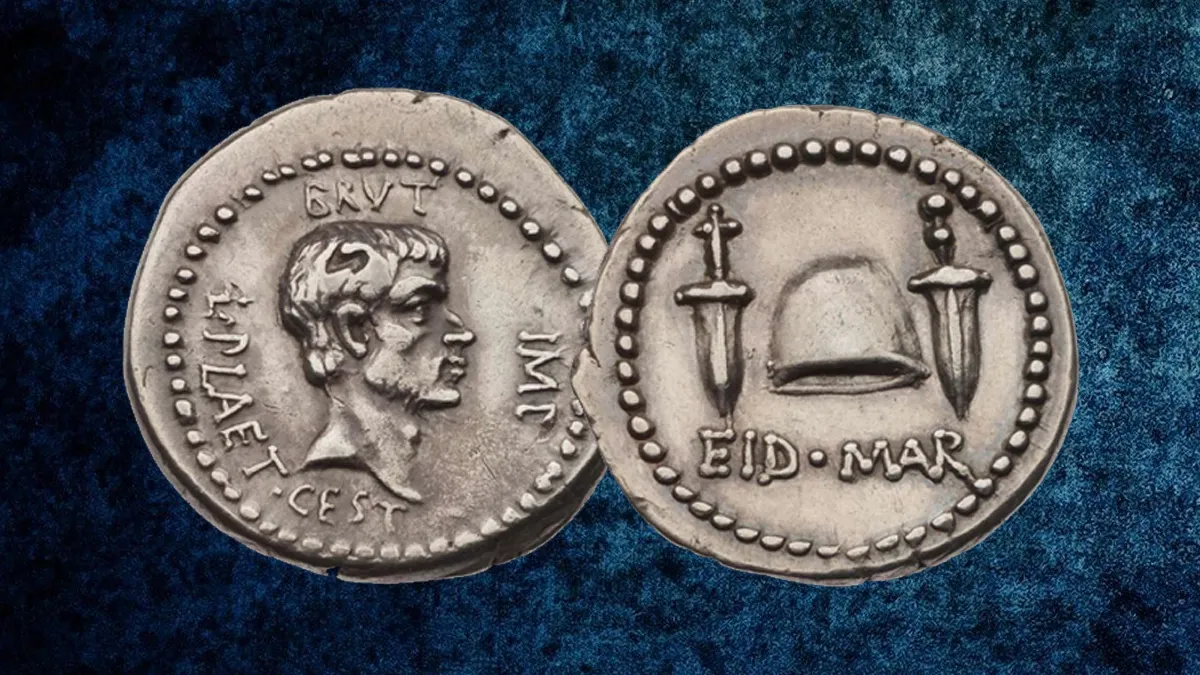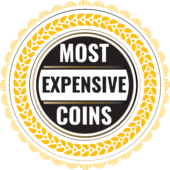
In all aspects of design, value, and quality, ancient coins are the best.
The historical importance associated with these ten ancient coins originates from a variety of variables that include important events in the growth of Western civilization. Others, which haven’t been seen in numismatics for more than 2,000 years, are the highest points of innovative and technological advances achievement. And yet others are so rare that there are currently only a few that remain. Get out more about the choice criteria that each of these historic coins achieved by read more.
Top 10 Most Valuable Ancient Coins Ever Minted
1. The Brutus “Eid Mar” Denarius, 42 BC
Brutus’ EID MAR coins are among the most important pieces of ancient Roman coin since they are the only ones to explicitly commemorate a murder. An EID MAR Silver Denarius certified NGC Ancients XF, 4/5 Strike, and 3/5 Surface with a mention of bankers’ marks (lot 33047) with an estimated value of $400,000 to $500,000 will be auctioned in the August Heritage sale. We understand of just over 100 of these extremely rare and popular examples.
The classic EID MAR design honors the killing of Julius Caesar by including two daggers and a liberty cap on the opposite side. The famous murder that happened on March 15, 44 B.C., influenced every aspect of Western history. While leaving Rome, Brutus organized an army with fellow assassin Cassius to fight against Octavian and Marc Antony, Caesar’s heirs.
2. The Athens Decadrachm, 460-430 BC
There are major differences in the design, value, and quality of ancient Greek and Roman coins. A famous ancient currency that was struck amid conflict is the Athens Decadrachm.
Over the previous 40 years or so, the Greeks had battled off Persian army invasions. The famous Battles of Thermopylae, Marathon, and Plataea were among the important battles. To liberate other Greek cities that were still controlled by the Persians, Athens developed an alliance with free Greeks. Sometime around 469 and 465 BC, they won.
The victory with the Persians was celebrated with the generating of the Athenian Decadrachm. Athena, the city goddess of Athens, can be seen on the front. The side features an owl, representing Athena’s symbol. This coin’s silver most likely came from silver mines that were located outside of Athens.
Because of its high value, only the wealthy could afford to use the coin. During Pericles’ reign, the coin was removed from circulation and most of the Athenians did not see it.
3. The Decadrachms Of Syracuse, 400-390 BC
Of all the ancient coins, the Syracuse dekadrachm was one of the most beautiful. Since nearly two thousand years ago, coin lovers have been fascinated with its beautiful design, which was developed by Kimon and Euinatos, among other masters. How did the handiwork-only Greeks achieve such heights of beauty?
Theodore Roosevelt, an attractive American president, was among those attracted to coins like this. It is often recognized that Roosevelt was a politician and reformist. His role in contributing to the reform of American money is less well-known. The President became enraged when he compared modern American coins to ancient beauties like this dekadrachm. He questioned why its banal gold and silver money was allowed by the strong, developing nation he led.
Why come American currency couldn’t be more creative? How come it couldn’t be as beautiful as old coins? How come it couldn’t have dramatic relief, and allow everyone to see every aspect of its design? Roosevelt put his plan into action by hiring sculptor Augustus Saint-Gaudens to design the 1907 twenty-dollar gold piece, which is recognized by many as the most beautiful American currency ever designed.
4. The Akragas Decadrachm, 411 BC
The Akragas Decadrachm is one of the rarest ancient coins issued during the 5th century on the island of Sicily. These were a few of the first cities in the world to begin minting silver coins.
The coin was issued likely to celebrate the winner of an Olympic chariot race in 411 BC. The front is the sun god Helio traveling in his chariot.
The sky is described by an eagle and the sea below is defined by a crab. The reverse side displays two eagles standing over the hare.
The coin was likely a commemorative piece, too valuable for daily use; one sold for 2,714,000 Swiss francs (USD 2,918,810) in a 2012 auction.
5. The Titus Colosseum Sestertius, 81-82 AD
The circa A.D. 81 to 82 posthumous issue is one of the ancient coins to describe the Roman Colosseum, which had ended in A.D. 80 during Titus’ rule.
A European collector bought the coin for £372,000 ($464,981 U.S.), exceeding the estimated £60,000 to £80,000.
6. The Naxos Tetradrachm, 460 BC
Naxos was the ancient Greek settlement in Sicily, evidently launched about 735 BC, only one year before Syracuse. Its residents were forcibly driven to Leontini by the tyrant Hieron of Syracuse on the decline of the Syracusan tyranny.
They were repatriated in 461 BC and believed that this special issue, just known from one couple of dies, was struck in celebration of this occasion.
The coin is considered a masterpiece from the late archaic/early classical period, often attributed to the Aetna Master and compared to the unique tetradrachm of Aetna in Brussels.
7. The Gold Stater Of Croesus, 550 BC
The ancient coin was made of an alloy called Electrum which is a mixture of gold and silver, and was found near the city of Sardis, the capital of the Lydian empire. King Croesus, the final king of Lydia is introducing the first pure silver and pure gold coins.
Electrum was verified to be a hard material for minting coins. Because it is a natural mix of gold and silver, the same amounts of gold and silver in each coin varied. This made it very hard to decide the coin’s exact value.
King Croesus minted the first pure gold coin, featuring a bull and a lion facing each other.
8. The Portrait Denarius Of Cleopatra And Mark Antony, 32 BC
This ancient coin represents the most famous couple in history- Cleopatra and Mark Antony. Cleopatra, as Cleopatra VII, was the last Ptolemaic ruler of Egypt and a central figure in the civil war between Mark Antony, Julius Caesar, and Octavian. All three men want to control Egypt’s wealth. Cleopatra first merged with Julius Caesar until his assassination in 44 BC but later, she joined Mark Antony.
The denarius was minted in 32 BC to mark their alliance; after Octavian beat Mark Antony at Actium in 30 BC, both Antony and Cleopatra died, leading to the end of Egyptian sovereignty and the Ptolemaic dynasty.
9. The Nero Port Of Ostia Sestertius, 64 AD
Rome, the ancient world’s largest city, lacked a nearby natural harbor on the Tiber River, causing challenges as the residents expanded. Emperor Claudius started a project to make a huge harbor at Ostia, constructed in 64 AD under Emperor Nero due to a famine, and goods to help the population grow as well.
This sestertius holds a statue of Nero on the front side and an overview of the new harbor with the river god Tiber on the back side. The ships on the back side are made with good description.
10. The Final Ancient Coin: Portrait Denarius Of Julius Caesar, 44 BC
Julius Caesar is the most famous in history and his assassination directed the change of the Roman Republic into the Roman Empire and was one of the most intelligent and controversial military leaders in Roman history.
This denarius is notable for featuring Julius Caesar’s portrait, the first Roman coin to display a ruler, establishing a precedent for all succeeding Roman emperors in coinage and governance.
Also Read – Top 10 Best Coin Dealers in New York
Conclusion:
The 10 most valuable ancient coins showcase the model of design, value, and historical significance that reflected essential moments in Western civilization. From the Brutus “Eid Mar” Denarius marking the end of the Roman Republic to the Nero Port Of Ostia Sestertius depicting Rome’s engineering feats, each coin reveals a story of innovation, power, and artistry. These coins not only perform as real leftovers of the past but also as testaments to the continuing impact of ancient cultures on modern numismatics and beyond.
